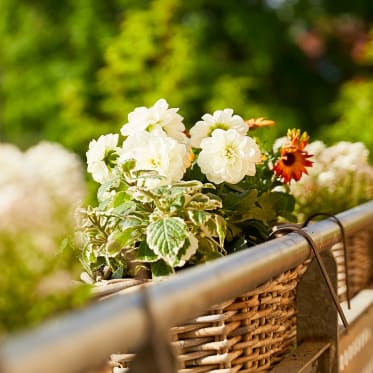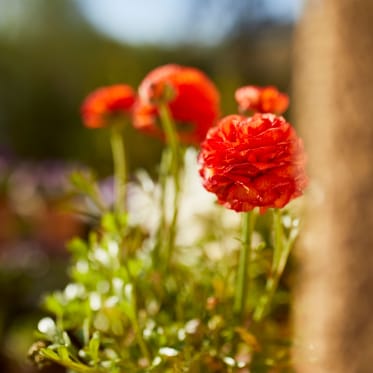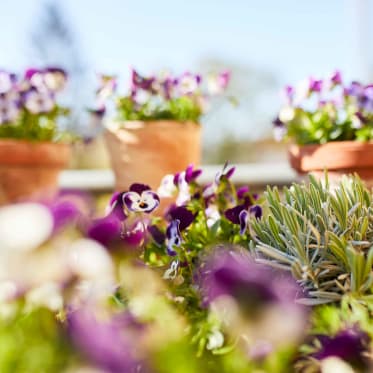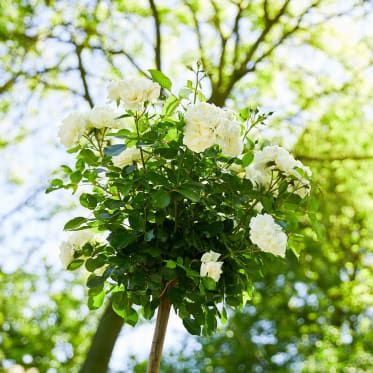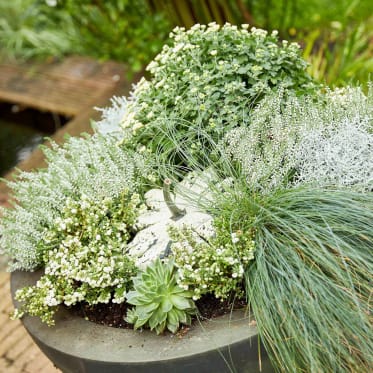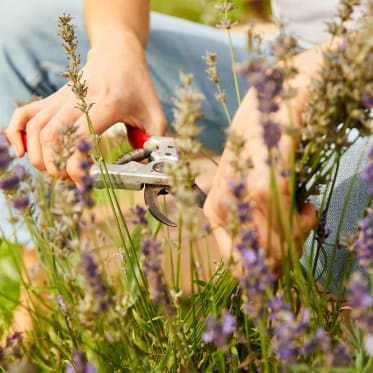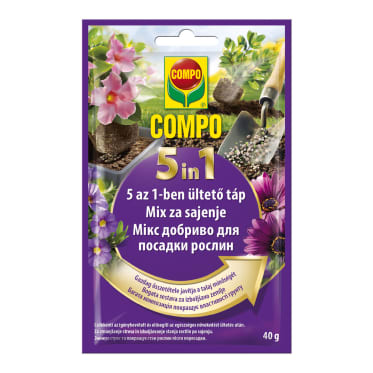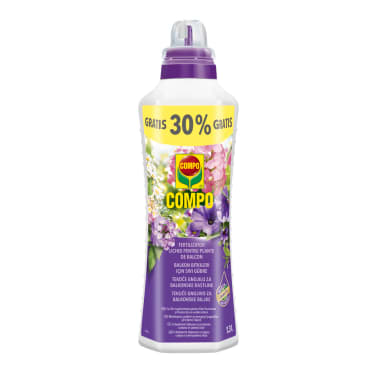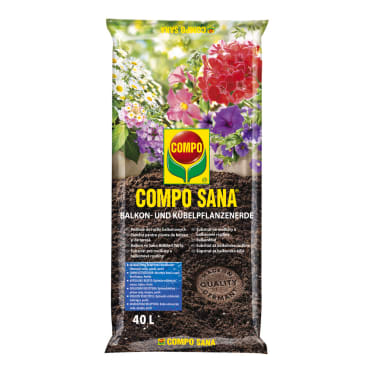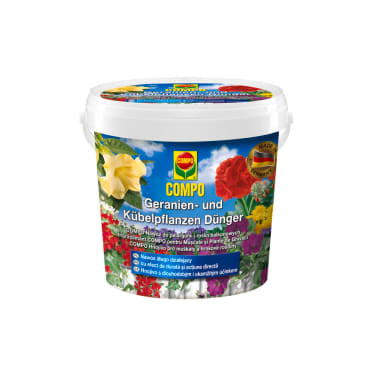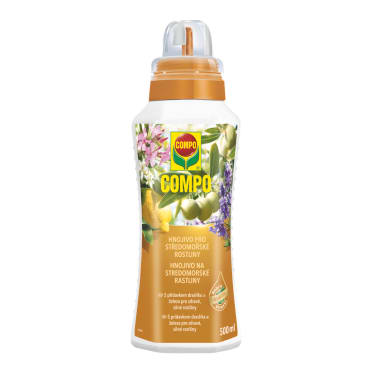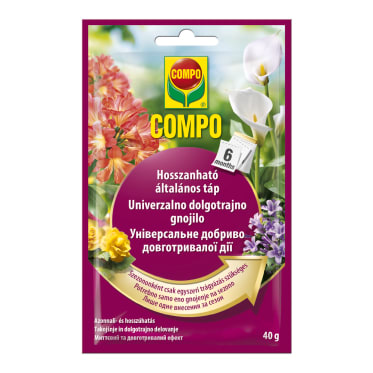Frequent search terms

- COMPO
- Guide
- Plant Care
- Balcony and potted plants
- Oasis of calm, vegetable garden or holiday paradise: Which balcony type are you?
Oasis of calm, vegetable garden or holiday paradise:
Which balcony type are you?
In the summer months we want to spend as much time as possible outside. Balcony owners in particular can count themselves lucky that they can simply move the centre of their lives outside. Regardless of whether you use your balcony to relax, for socialising with friends or to exercise: Depending on how you use it and the atmosphere, you can personalise your favourite outdoor spot with different summer flowers, perennials and tall stems. We show you three different ways and top tricks for preserving your floral abundance for longer.
Table of content

Romantic and playful: The balcony for dreamers
Do you imagine a romantic balcony with interlaced climbing plants and fragrant flowers? There are a few resilient rose varieties that also do well in tubs and transform your balcony into a little paradise. Besides shrub roses, you can accentuate your outdoor space with tall rose stems. We recommend combining them with baby's breath, sweet alyssum, twinspur and hanging verbenas. Hydrangea, with their enormous flowers, and eye-catching fuchsia, flowering all year round, are ideal for semi-shaded areas. If you prefer things to be soft and playful, you can fill your balcony boxes with pelargonium, hanging petunia, busy Lizzie, twinspur and mini-pansies. Do you want to shield your new favourite spot from the sun or your neighbours' prying eyes? Then plant ivy, climbing roses, Bukhara fleeceflower, clematis or sweet pea.
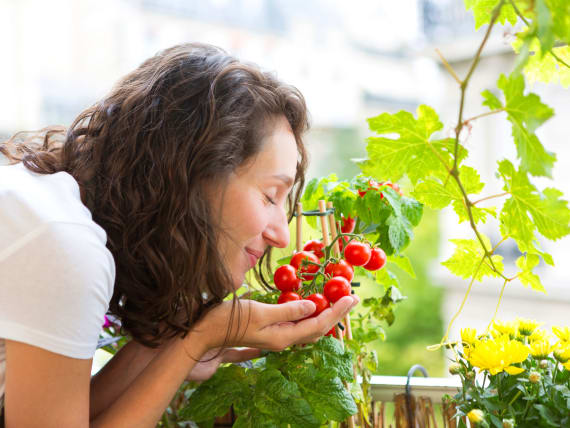
Aromatic and tasty: The balcony for the self-sufficient
Do you want to turn your balcony into a kitchen garden? No problem! Fruit, vegetables and herbs taste fresh when grown in tubs, too. Not only is the aromatic flavour impressive, many crop plants also look beautiful on your balcony. The growth habits of small column trees or tall berry stems, the bright red stems of chard, the attractive flowers of peaches and colourful fruits turn your balcony into a real eye-catcher. The most popular vegetables are tomatoes, cucumber, curled lettuce, pepper and courgette. Radishes and runner beans also grow well in tubs.
A herb garden is an exciting experience for the eyes and nose. Sage, rosemary, thyme, oregano and parsley can fit onto the smallest of balconies and can add a decorative touch when placed on different levels of a ladder.
In addition to vegetables and herbs, the range of small fruits is getting larger and larger. Whether column apples, pears, peaches or sweet cherries: The range leaves nothing to be desired for the potted plant gardener. But fruit plants are not among the most straightforward of potted plants. Since apple and pear trees are often not fertile by themselves, to get a rich harvest you need at least two different varieties so they can pollinate each other.
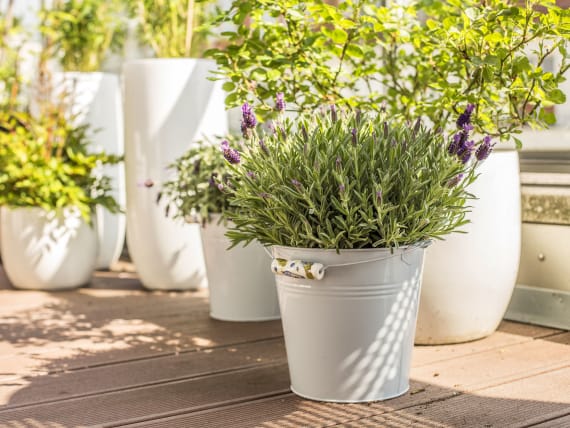
Mediterranean and exotic: The balcony for globetrotters
Sun worshippers such as oleander, angel's trumpets and olive trees quickly create the perfect Mediterranean holiday atmosphere on balconies and terraces. As they can't withstand frost in our climate, they need to be moved to a winter home during the cold season of the year. But this doesn't have to be a downside. Exotic plants in tubs can be decoratively rearranged time and time again. The fiery flowering hibiscus and the hemp palm tree are refreshingly different in a slightly shaded corner. Figs, lemons and pomegranate can also help you quench your thirst for far-away lands and culinary delicacies.

How to keep yours for longer
It all starts with the right soil
As pots, boxes and tubs are self-contained enclosures with relatively low soil reserves, you should use a high-quality potting soil for planting. Make sure that it is structurally stable, allows air to pass through to the roots and has a high water storage capacity. To ensure the healthy development of plants and opulent flower formation, you should take the different growth habits into account when planting balcony boxes, tubs and hanging baskets and not position the plants too close together.
Three things you should bear in mind when planting flower boxes:
- Water the pot balls thoroughly. It is best to dip the plant in a bucket of lukewarm water until no more air bubbles come to the surface. This makes it easier for the balls to come loose from the pot and helps the roots grow more quickly in the new substrate.
- To prevent water logging, add drainage in the form of clay fragments or pebbles. Add a layer of potting soil on top. Position the plants in the box with enough space between them (15 to 20 cm), even if it seems a little bare at first. When well cared for, the gaps are filled within a few weeks.
- Fill in all gaps in the soil and press the substrate gently. Then water, but don't keep the boxes too wet so that the roots quickly grow through the soil.

Water your plants in moderation
Plants in pots and tubs can only store a limited amount of water. Regular and proper watering is therefore one of the most important parts of caring for your plants. Less is more! Most plants won't tolerate wet feet. To prevent rotting roots, any excess water that collects in the drip tray or planter should be emptied out. We recommend watering directly onto the soil surface in the morning or the evening to prevent any unnecessary evaporation.
Pamper your plants with nutrients
In addition to a good soil, regular fertilisation is key to beautiful and long-lasting floral abundance. Most balcony and tub plants, such as insatiable geraniums and petunias, require a lot of nutrients. Add a special liquid fertiliser to the water once or twice a week. Alternatively, you can use a slow-release fertiliser that supplies the plants with nutrients over several months.
More information on the topic of fertilisation
More information on balcony plants
These products help you care for your balcony and potted plants



